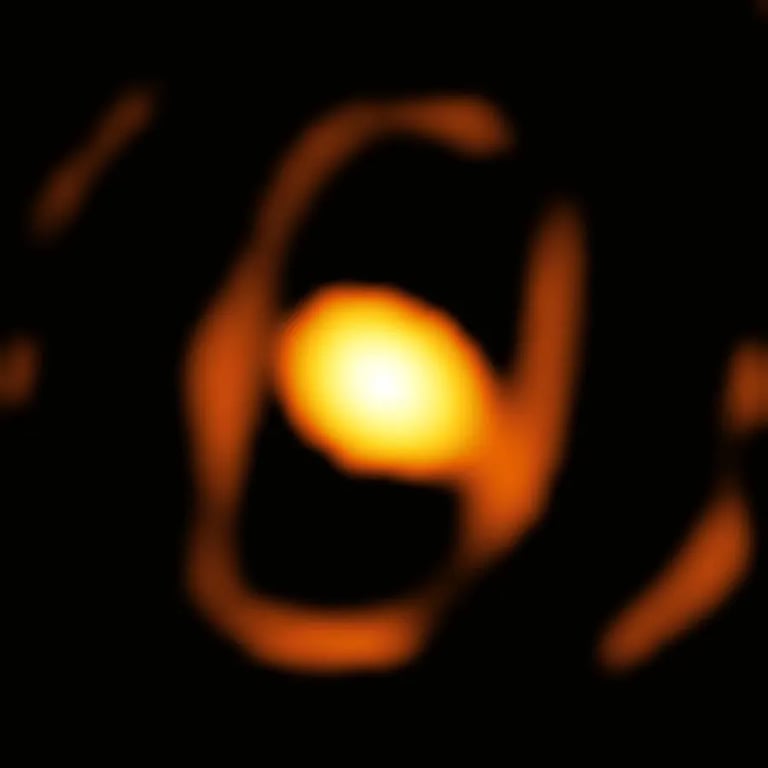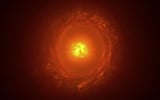Astronomers Capture First Close-Up of WOH G64 Before Potential Supernova
November 21, 2024
As WOH G64 continues to dim, capturing further detailed images will become increasingly difficult, although upcoming upgrades to the VLTI, such as the GRAVITY+ instrument expected in 2026, may enhance observational capabilities.
If WOH G64 does explode, it could be visible to the naked eye, reminiscent of the supernova observed in the same galaxy in 1987.
Astronomers have successfully captured the first close-up image of WOH G64, a massive star located 160,000 light-years away in the Large Magellanic Cloud, just before it is expected to go supernova.
This groundbreaking observation was made possible by advancements in Very Large Telescope Interferometer (VLTI) technology, which allowed researchers to combine data from four telescopes to create a detailed image.
Previously, WOH G64 had only been observed as a point source in studies conducted in 2005 and 2007, but the new imaging reveals significant changes in its brightness and structure over the past decade.
The research team noted that material ejected from WOH G64 is obscuring the star, leading to its dimming and complicating future imaging efforts, even with advanced instruments like GRAVITY.
Understanding WOH G64's mass loss is crucial, as it plays a significant role in the evolution of massive stars and their eventual supernovae, which contribute to the formation of heavy elements.
Experts caution that red supergiants like WOH G64 exhibit unpredictable behavior, making it challenging to definitively predict their lifespan and eventual explosion.
Co-author Jacco van Loon has been studying WOH G64 since the 1990s and has observed its variability in brightness, suggesting it is transitioning towards a smaller, hotter state.
The insights gained from studying WOH G64 could provide valuable information about the final stages of stellar evolution and the origins of many chemical elements essential to life.
The ejected material has formed a thin elliptical ring around WOH G64, offering further insights into the dynamics of dying stars.
While the exact timing of WOH G64's supernova remains uncertain, comparisons can be drawn with other stars like Betelgeuse, which has also exhibited dimming but is less variable.
Summary based on 18 sources
Get a daily email with more Science stories
Sources

Forbes • Nov 21, 2024
In Photos: The First Close-Up Of A Star Outside Our Galaxy
The Guardian • Nov 21, 2024
First close-up image of a star outside Milky Way shows supergiant in ‘cocoon’
Yahoo News • Nov 21, 2024
Astronomers say they’ve captured the first close-up image of a star beyond our galaxy
Yahoo News • Nov 21, 2024
Scientists obtain image of a star on the precipice of disaster